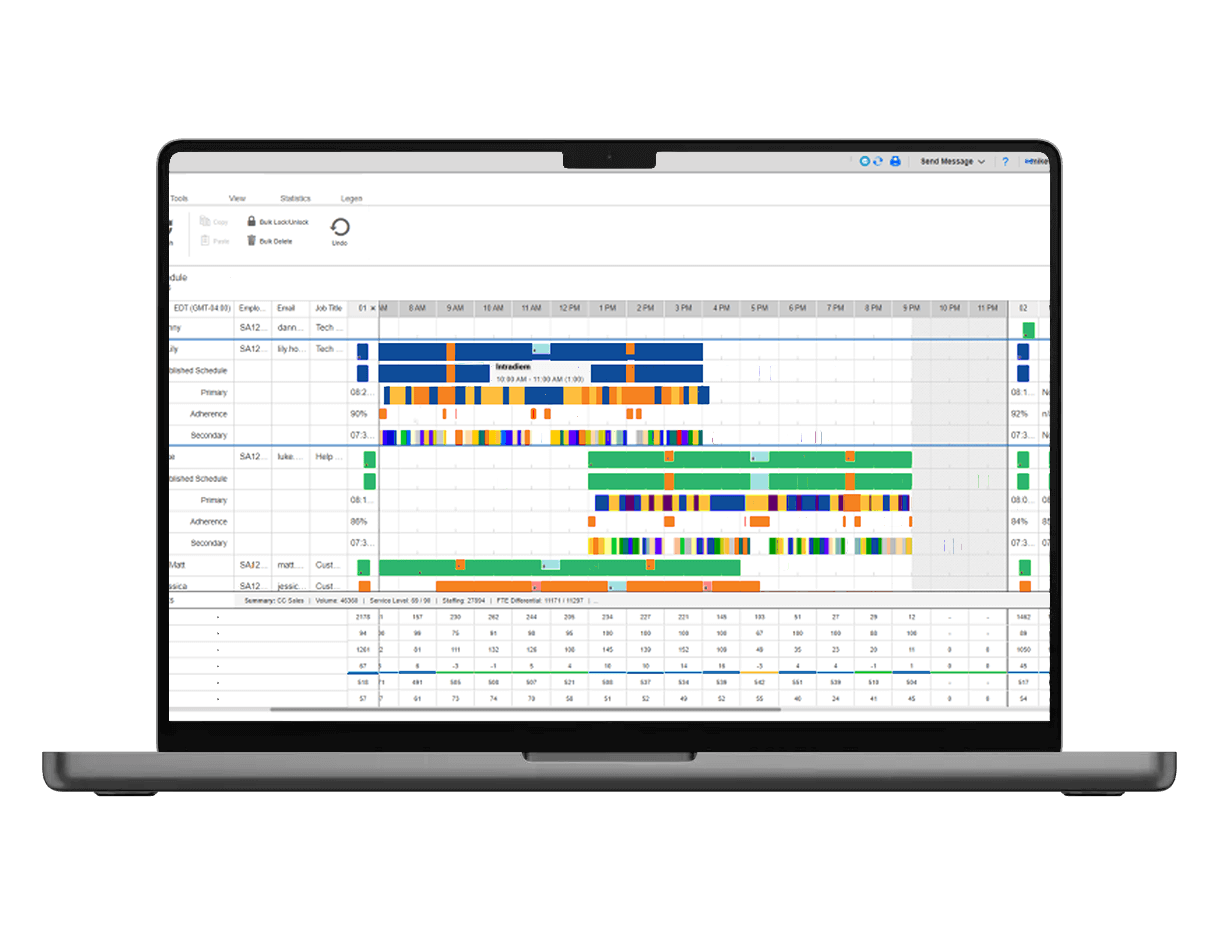
Why Real-Time Automation Must Come Before AI in Contact Centers
As AI continues to dominate conversations around the future of contact centers, an often-overlooked yet crucial technology demands our immediate attention: real-time automation. Before investing in AI, which is adept at generating insights from large datasets, contact centers must first ensure that their operations are optimized with genuine real-time capabilities. This foundational step can mean the difference between an AI investment that’s merely informative and one that’s transformative.
The Evolution of Contact Center Technology
To understand why real-time automation is essential, let’s look at how contact center technology has evolved:
Despite technological advancements, contact centers still struggle to adapt to live customer interactions. Many WFM and ACD systems rely on historical data, which can’t respond to real-time changes in call volumes, staffing, or customer needs.
This gap creates operational inefficiencies, poor customer experiences, and heightened agent stress. By implementing real-time automation, contact centers can address these challenges head-on—filling an operational void that AI alone cannot solve.
Why It Matters:
Today’s customer demands and remote work environments require an adaptable, responsive contact center. Real-time automation is not only necessary for immediate operational adjustments, but it’s also foundational for a sustainable, engaged agent experience.
Real-Time Automation: The Foundation for a Dynamic Contact Center

Real-time automation bridges the gap between historical data and real-time decision-making. While many vendors claim to offer “real-time” solutions, they often rely on periodic data refreshes, which can take anywhere from a few minutes to an hour. This lag is problematic in environments where customer expectations are immediate, and call volumes can spike without warning.
True real-time automation means data is captured and acted upon the moment it is generated.
For instance, if a contact center experiences a sudden influx of calls, real-time automation can instantaneously adjust staffing levels, deploy agents from training sessions, or reassign tasks to balance workloads. This level of responsiveness not only improves operational efficiency but also ensures a consistently positive customer experience, regardless of fluctuating demand.
Moreover, real-time automation plays a crucial role in reducing costs by dynamically optimizing resource deployment. By automating staffing adjustments, contact centers can avoid the pitfalls of overstaffing (leading to unnecessary expenses) and understaffing (resulting in poor customer service and agent burnout).
Why It Matters:
Real-time automation ensures that your contact center is always prepared to respond, regardless of demand fluctuations. This reduces costs and creates a better customer experience by enabling your team to meet demand with precision and agility.
The Strategic Role of Real-Time Automation as a Prelude to AI
AI is powerful, but its full potential is realized only when it operates on real-time data. Without real-time automation, AI’s insights are limited to retrospective analysis, which can offer valuable lessons but lacks immediate applicability. By first implementing real-time automation, contact centers set the stage for AI to build upon a base of already optimized operations. This allows AI to analyze fresh data continuously and suggest actionable strategies that are both timely and effective.
For example, while AI might efficiently summarize past interactions and suggest improvements, without real-time automation it cannot dynamically adjust staffing levels or redistribute tasks during sudden shifts in demand.
In other words, real-time automation ensures data is not only analyzed after the fact but acted upon in the moment—transforming AI from a tool of analysis into a driver of real-time optimization.
By prioritizing real-time automation, contact centers can also accelerate the return on investment (ROI) from AI. Automating intraday processes not only improves efficiency but also frees up resources to fund AI initiatives. This strategic sequencing maximizes both operational and financial benefits, allowing contact centers to evolve with purpose and precision.
Why It Matters:
Real-time automation creates the ideal environment for AI to drive impactful improvements. It lays the groundwork so that when AI insights are ready, they can be acted on immediately, turning insights into real-time actions.
Implementing Real-Time Automation: Where to Begin
If you’re ready to harness the power of real-time automation in your contact center, here are a few steps to get started:
Audit your current systems to identify processes that depend heavily on historical data
Look for opportunities where real-time automation could immediately reduce manual interventions and streamline operations.
Related Resource:

Focus on areas that could benefit the most from instant, data-driven adjustments
For many contact centers, this includes managing call spikes, adjusting agent availability, and optimizing training schedules based on live demand.

Select a solution that integrates with your existing contact center technology, pulling and processing live data as it is generated
Intradiem’s automation solutions, for example, refresh data every few seconds, allowing for minute-to-minute adjustments that deliver consistent, high-quality service.

Map out a phased implementation plan
This can be easily achieved by starting with critical operational areas and gradually expand as your organization becomes more familiar with the benefits of real-time automation.
Once your real-time automation processes are well-established, you can begin exploring AI initiatives that build on this optimized foundation
This may include using AI to enhance customer segmentation, personalize interactions, and offer predictive insights for more strategic decision-making.
Why It Matters:
Establishing a real-time automation roadmap ensures that your organization builds the right foundation. This approach allows you to implement AI strategically, saving time and avoiding the need to backtrack on your tech investments.
Real-Time Automation: The Future-Proof Step
The contact center of the future is one that is not only data-driven but also capable of acting on that data instantly. Real-time automation enables a level of responsiveness and agility that is foundational to any successful AI strategy. By addressing real-time data gaps first, contact centers can ensure that when AI is introduced, it can operate in an environment where every insight can be immediately acted upon—creating a seamless, end-to-end customer experience and supporting a resilient, empowered workforce.
As AI continues to evolve, so too will the demands placed on contact centers. Real-time automation allows you to stay ahead of these demands, future-proofing your operations, improving customer satisfaction, and creating a more sustainable environment for your agents. Don’t wait until your contact center is overwhelmed by the complexities of AI. Start by building a foundation of real-time automation today, and let AI take your contact center to new heights when the time is right.
Why It Matters:
Future-proofing your contact center with real-time automation equips you to handle today’s demands and prepares you for tomorrow’s AI-driven landscape. You’ll be ready to leverage AI fully, maximizing its impact and ensuring your center remains resilient, efficient, and employee-friendly.
Contact us to learn more.
Learn how contact center automation solutions can improve your teams’ performance.
Fill out the form and we’ll be in touch.



